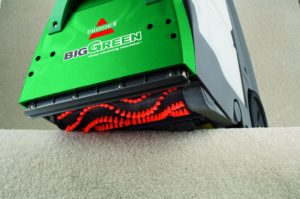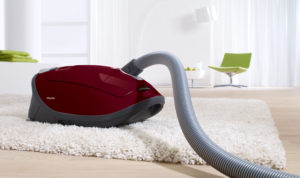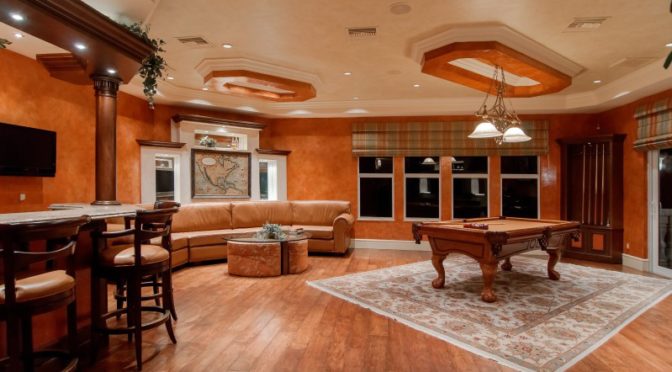
If you’ve decided to finish your basement or bought a home with an already-finished basement (lucky you!), you’re going to want to carpet it. While it’s possible to be perfectly happy with a cold cement floor, basements are already naturally less welcoming than the above-ground parts of your home, and a carpet adds warmth, comfort, and coziness in a way a bare floor never can. So once you’ve decided to install a carpet in your basement, what’s important to know when choosing one?
We’re going to answer that question today, paying particular attention to the most common reason for not carpeting basements (or finishing them in general): moisture and flooding concerns. While we can’t guarantee following our tips will keep you from ever having to deal with mold or mildew, we are sure that you’ll increase your odds of having a carpeted basement you’re happy with in the short and long term. Here’s what to do and what not to do when carpeting a finished basement.
Choose synthetic fibers over natural ones for basements
No matter how many options you come across when shopping for a carpet, you’re ultimately going to be choosing between two broad categories: synthetic, or human-made fibers, and natural, or environmental fibers. While we appreciate the many benefits of natural carpet fibers, the bottom line is that when choosing a carpet for a basement, you want it to be synthetic. Synthetic fibers breathe better, which is another way of saying they aren’t going to hold nearly as much moisture as natural fibers do. Why does this matter?
This matters because basements are essentially holes in the ground for water to seep into. As you likely learned (and forgot) somewhere during your school years, the earth is full of groundwater, and this water will find its way into any dry area possible, including in your basements. This is why basements are damp by definition. As a result, whatever you use for flooring needs to be able to handle higher levels of moisture without breaking down or harboring mold and mildew. Synthetic fibers release moisture far better than natural fibers, which makes them far less likely to lead to fungal issues. Similarly, when you buy synthetic broadloom today, you’ll almost always get a synthetic backing, which you’ll also want so your carpet can breathe–and specifically, breathe out moisture.
Use any style you like (as long as your basement is finished)
Now that we’ve established that you’ll want a synthetic fiber for your basement, you’ll be happy to know that just about any kind of residential carpet style can work in a finished basement. That includes berbers with loops, thicker saxonies, and even plush and welcoming friezes. You’ll just want to pay particular attention to your carpet warranty; make sure it covers basement installations and make sure there aren’t any exclusions related to moisture, because every fully-underground basement, no matter how well sealed, will always be at a greater risk of moisture than a ground-level floor, barring flooding, burst pipes, or window and roof leaks.
Don’t forget a soft, rubber-free carpet padding
If you’re installing a residential carpet, it’s probably going to have a pad beneath it. And if you’re installing it in a basement, you’re going to want a soft pad to add not only comfort, but warmth; keep in mind that basements are generally the coolest rooms in a home due to being underground and insulated from the heat of the sun. You’ll usually be fine with underpads in a basement as long as you choose synthetic ones (there’s that word again). Polyurethane foam pads are good; rubber pads are bad and can lead to delamination and future mold issues. If you want carpets with attached pads, look for Kanga-style carpets instead of those backed by rubber.
Don’t try to carpet an uninsulated, unfinished, or flooding basement
While it’s perfectly possible to have carpets in finished and dry basements, none of our suggestions are going to do any good if you’re working with a basement that isn’t insulated from external leaks. Your carpet fibers won’t matter if your basement is regularly flooding, and your warranty won’t be worth the paper it’s printed on. In these environments, you’ll want to stick with good old cement and concrete flooring. If you absolutely need to cover a concrete floor, you’ll want to look for cheap outdoor carpets with water resistance. Be ready to replace them as needed; no true carpets are waterproof.
Choose a good carpet cleaner and vacuum cleaner

While even the best carpet cleaners and vacuums won’t help keep your carpets fully dry (you’ll need a good sump pump for that), they can help prolong the life of your carpets by removing excess moisture and keeping the fibers clean and free from the kinds of spills and residue that lead to staining and soiling. For carpet cleaners, we recommend the Bissell 86T3 Big Green. We’ve repeatedly praised its cleaning power and reliability and see it as the best carpet cleaner you can buy for under $1,000 right now.

When it comes to vacuums, we generally recommend buying one machine that can clean all piles and styles instead of “investing” in a stable of specialty vacuums that can only really do one thing well. Two good examples of do-it-all, buy-it-for-life vacuum cleaners are the Miele Complete C3 Soft Carpet and the Miele Compact C2 Electro+. Both will care for low-, medium-, and high-pile carpets, bare floors, and a range of styles without skipping the beat. Between the two, the Soft Carpet is the stronger machine, but the Electro+ is an excellent compromise for families with smaller budgets.
![]() You can buy the Bissell 85T3 Big Green carpet cleaner here on Amazon. You can buy the Miele Complete C3 Soft Carpet here or buy the Miele Compact C2 Electro+ here.
You can buy the Bissell 85T3 Big Green carpet cleaner here on Amazon. You can buy the Miele Complete C3 Soft Carpet here or buy the Miele Compact C2 Electro+ here.
![]() Canadians can buy the Miele Soft Carpet here, the Compact Electro+ here, and the Bissell Big Green here.
Canadians can buy the Miele Soft Carpet here, the Compact Electro+ here, and the Bissell Big Green here.
 If you find our research on PMC helpful, you can follow our efforts to keep maniacally reviewing home cleaning tools by shopping through our links above. We promise to keep fighting the good fight against every horror children, animals, and grown, yet messy humans can inflict upon a clean home.
If you find our research on PMC helpful, you can follow our efforts to keep maniacally reviewing home cleaning tools by shopping through our links above. We promise to keep fighting the good fight against every horror children, animals, and grown, yet messy humans can inflict upon a clean home.

